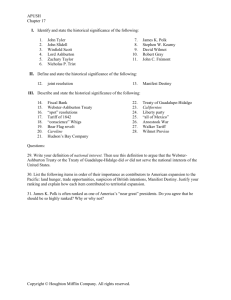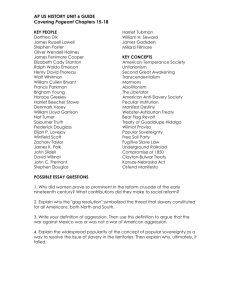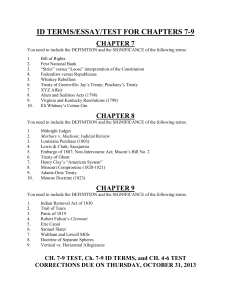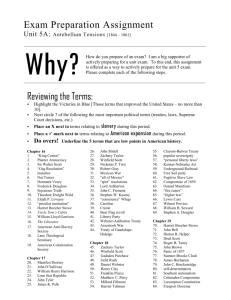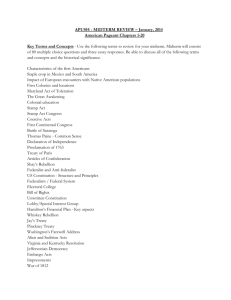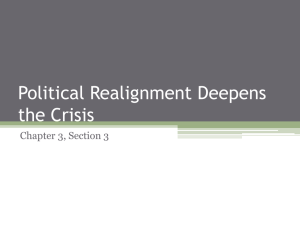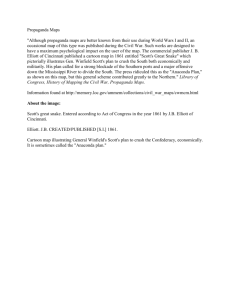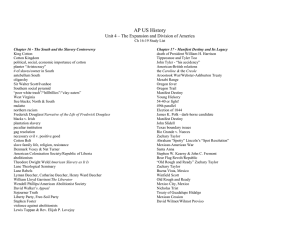APUSH Unit 5 Terms
advertisement
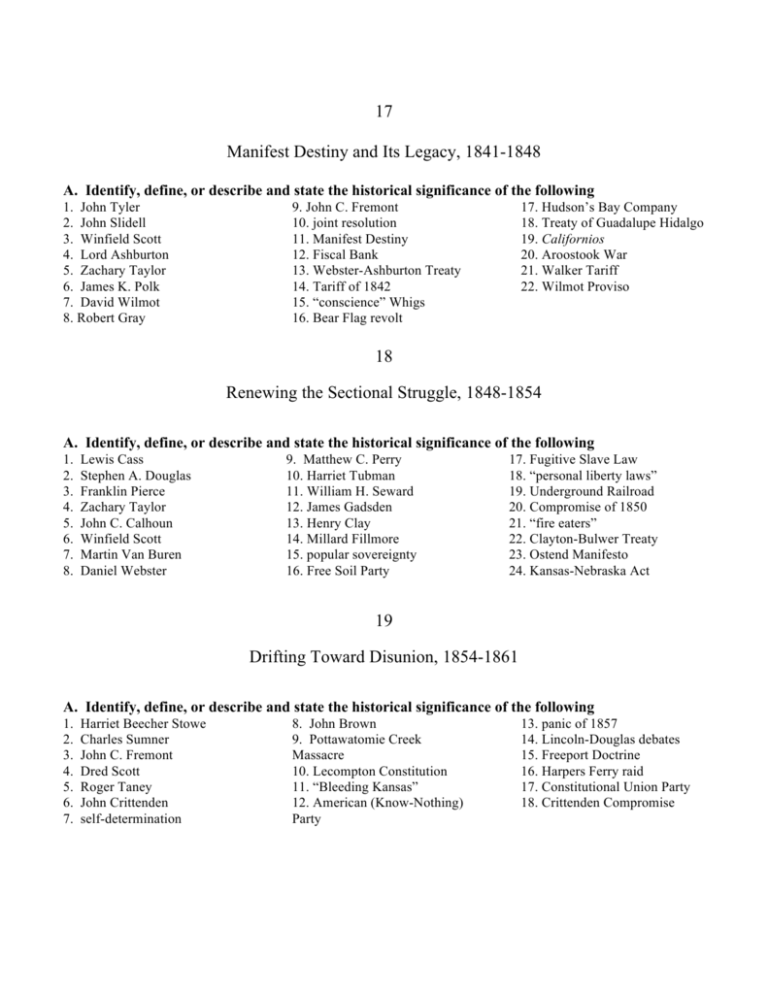
17 Manifest Destiny and Its Legacy, 1841-1848 A. Identify, define, or describe and state the historical significance of the following 1. John Tyler 2. John Slidell 3. Winfield Scott 4. Lord Ashburton 5. Zachary Taylor 6. James K. Polk 7. David Wilmot 8. Robert Gray 9. John C. Fremont 10. joint resolution 11. Manifest Destiny 12. Fiscal Bank 13. Webster-Ashburton Treaty 14. Tariff of 1842 15. “conscience” Whigs 16. Bear Flag revolt 17. Hudson’s Bay Company 18. Treaty of Guadalupe Hidalgo 19. Californios 20. Aroostook War 21. Walker Tariff 22. Wilmot Proviso 18 Renewing the Sectional Struggle, 1848-1854 A. Identify, define, or describe and state the historical significance of the following 1. 2. 3. 4. 5. 6. 7. 8. Lewis Cass Stephen A. Douglas Franklin Pierce Zachary Taylor John C. Calhoun Winfield Scott Martin Van Buren Daniel Webster 9. Matthew C. Perry 10. Harriet Tubman 11. William H. Seward 12. James Gadsden 13. Henry Clay 14. Millard Fillmore 15. popular sovereignty 16. Free Soil Party 17. Fugitive Slave Law 18. “personal liberty laws” 19. Underground Railroad 20. Compromise of 1850 21. “fire eaters” 22. Clayton-Bulwer Treaty 23. Ostend Manifesto 24. Kansas-Nebraska Act 19 Drifting Toward Disunion, 1854-1861 A. Identify, define, or describe and state the historical significance of the following 1. 2. 3. 4. 5. 6. 7. Harriet Beecher Stowe Charles Sumner John C. Fremont Dred Scott Roger Taney John Crittenden self-determination 8. John Brown 9. Pottawatomie Creek Massacre 10. Lecompton Constitution 11. “Bleeding Kansas” 12. American (Know-Nothing) Party 13. panic of 1857 14. Lincoln-Douglas debates 15. Freeport Doctrine 16. Harpers Ferry raid 17. Constitutional Union Party 18. Crittenden Compromise
